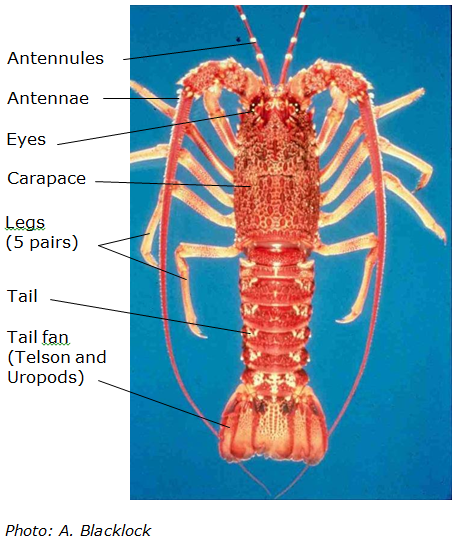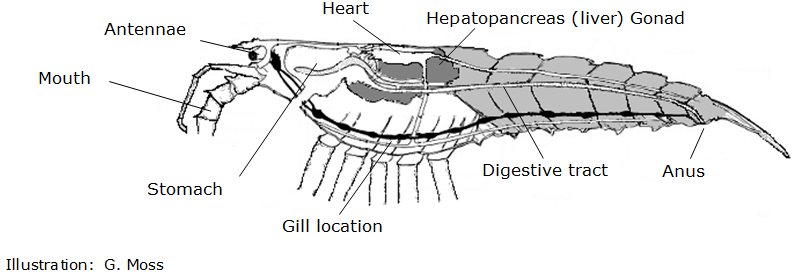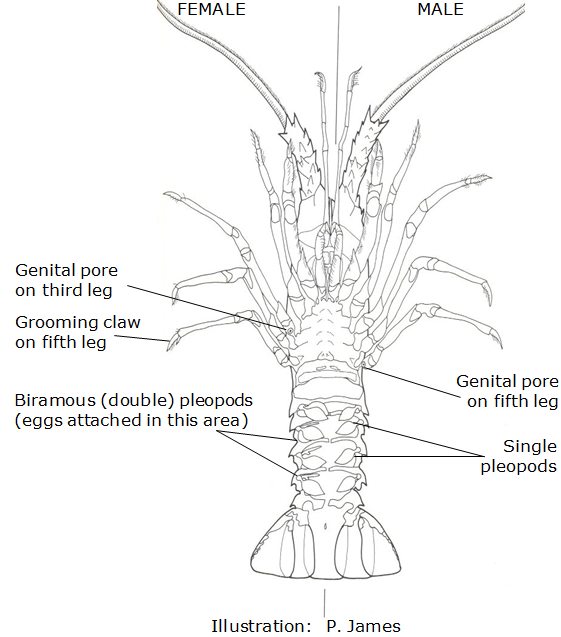Lobster anatomy
External anatomy

Antennules: The short slender appendages are capable of detecting food (tasting), danger, and pheromones
Antennae: Long “feelers” that can be rotated around to fend off predators, which also have some sensory function
Eyes: Compound eyes at the tip of the eye stalks
Carapace (or cephalothorax, the head and thorax): Protection of vital organs such as the liver, stomach, gonads, gills and heart by the exoskeleton case
Legs: Five pairs of legs used for walking and feeding
Tail (or abdomen): Consisting of six separate and moveable parts, plus the tail fan (telson and uropods), the tail contains the main muscle for movement (swimming) away from danger. Under the tail are paired feather-like appendages (pleopods).
Internal anatomy

Mouth: The mouth is for the ingestion of food. It has a series of appendages associated with it that help bring the food to the mouth and crush it before ingestion.
Gills: The gills, which sit under the carapace at the base of each leg, are used for the uptake of oxygen from the water and release of carbon dioxide
Heart: The heart pumps blood around the body of the lobster
Gonad: The gonad produces eggs or sperm for reproduction
Hepatopancreas (or liver): The hepatopancreas produces digestive fluids which break down food that is eaten
Digestive tract: The digestive tract absorbs nutrients from the food
Anus: Waste products of digestion are excreted through the anus.
Sexual differences

Genital pores:
- In females these are positioned on the base of the 3rd walking leg, so that eggs are extruded and pass through the sperm package which the male deposits on her abdomen, before they attach to the pleopods.
- In males the pores are positioned on the base of the 5th walking leg, so that the sperm package is deposited below the female genital pores.
Grooming claw:
- Present on the 5th leg of the female only, it is used for grooming the eggs when they are attached to the pleopods.
- Not present on males.
Pleopods:
- Females have biramous (or double) pleopods. The innermost branches of the pleopods are covered with long hairs for the attachment of the eggs. The female keeps the eggs aerated by slowly beating her pleopods.
- Males have single pleopods.
